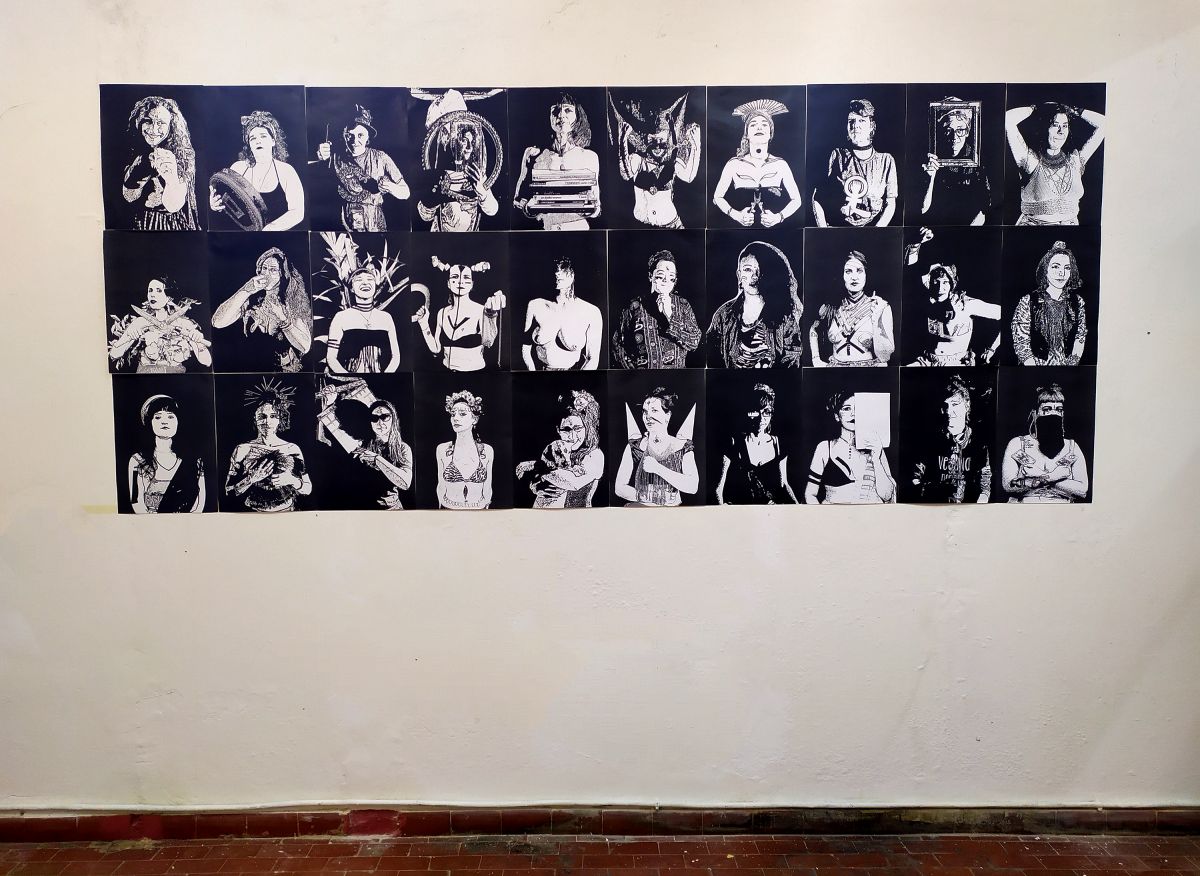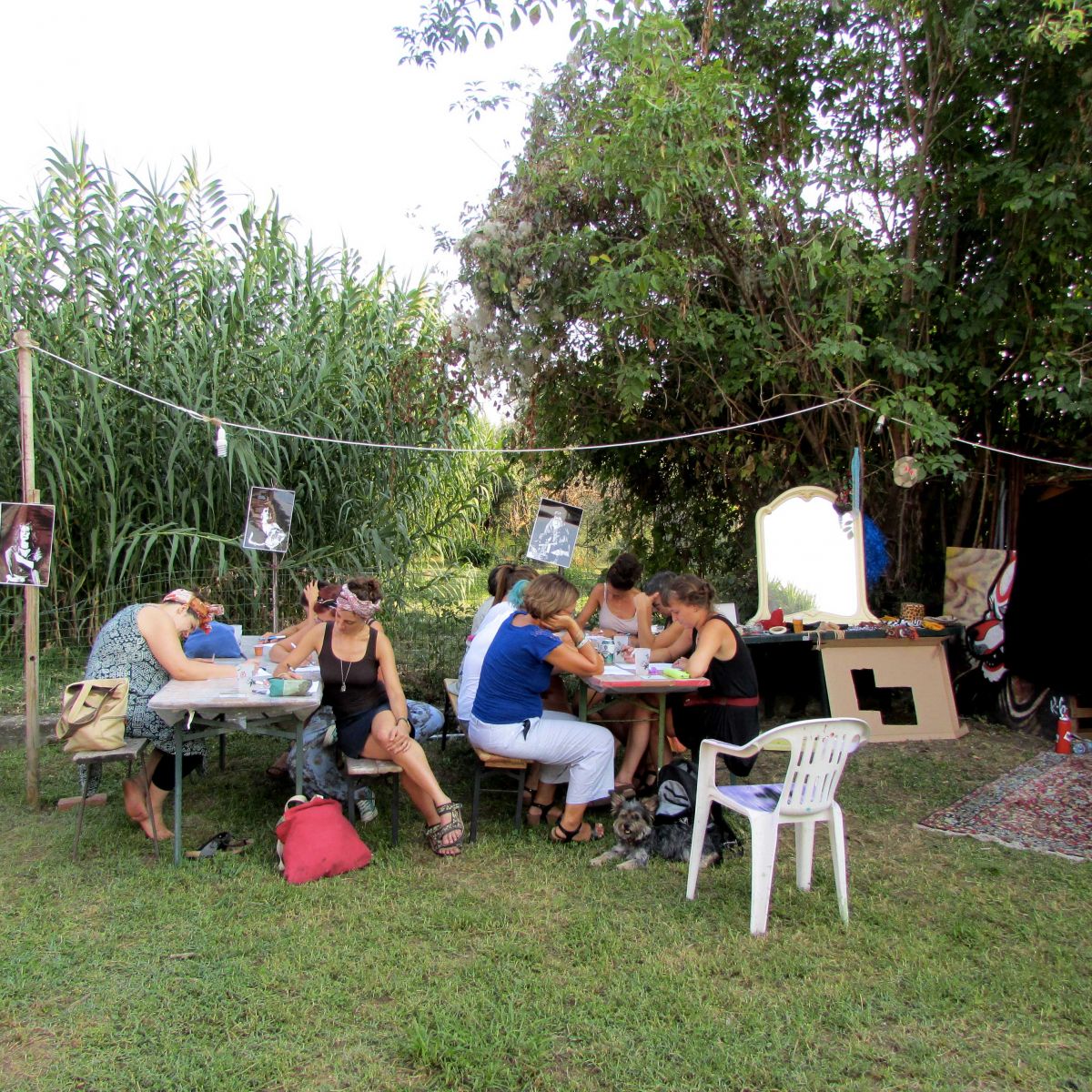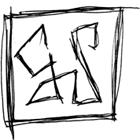EroiKa
In 2018 I started the EroiKa feminist participatory art project, which fits into the contemporary avant-gardes both as a SEA, social engaged art, and as a participatory work, i.e. created collectively by temporary communities of women. The project has various objectives, but above all that of developing both a conceptual and visual critique of the gender stereotype by creating a collection of portraits, which are self-portraits, photographs, which the artist digitally reworks in post-production to obtain images in black and white that will be distributed free of charge to the participants in digital format and in the cultural environments that will host the project, both as material printed with screen printing and digital printing, and as a semi-permanent wall installation with the collage technique in public spaces, both in the form of publications, each series has a number and the photos are associated with original texts written by each participant.
EroiKa takes place primarily in the form of a workshop, in which the participants create a self-portrait of their EroiKa character on their own bodies, they become performers and not models, the artist only creates the opportunity to trigger this path, the participant implements it.
EroiKa is a feminist participatory art project, it is in this perspective that the art of body adornment is used as a possibility of artistic language. If the hypersexualized and reified female figure is based on the reduction of meaning of ornamental objects, which only serve to emphasize the message of the seductive body, in our EroiKa self-portrait journey we want to give space to a visual assemblage that triggers another type of language and conveys then another type of message. In this case the ornaments serve to enrich the half-length portrait with expressiveness; an expressiveness that looks in another way, looks for something else. For every woman there is a different answer to this challenge.
The role played by the word is also important for this process of deconstructing stereotypes. I ask the performers to work on a short written text that presents their EroiKa, I propose to write it in the first person, so as to obtain the effect of “talking” images once juxtaposed with the corresponding photos. The result is an excellent result in qualitative terms, each one manages to write a text that allows the understanding of the EroiKa that she has impersonated, the text really works as a vocalization of the character. It is particularly effective in the paper form of the magazine, every time I show it to someone who does not know the project, the sentences help them enter the concept. I also find it absolutely beautiful to be able to collect all these portraits that are self-portraits that are talking. It is the inverse of publicity photos and classic portraits in which women are objectified and mute models. As an artist I propose the method of participatory work, therefore of working together, collectively, to create a work of art to create a space for reflection and re-elaboration with respect to these questions: how much has the television and mass media commercial imagery conditioned our gaze on ourselves through the eroticization of the female role and image? Has it influenced our way of being, of expressing ourselves, of living our body?
For this cultural system, our body must be docile, that is willing to assume the positioning that is requested and suggested to us through mass cultural production, which creates directed collective imaginaries.
From Gribaldo and Zapperi, De Laurentis 1996, p. 141, in Gribaldo A. – Zapperi G. (2012), The screen of power. Feminism and the regime of visibility, Ombre Corte, Verona.
“The tension between watching and being watched is structuring for female identity. Italian commercial television has played a key role in expressing this tension through excessive and grotesque ways in which the feminine appears imprisoned in the classic role of erotic object It is signi cant that this happened in the years that followed a decade of feminist struggles. At a time when relations between the sexes are so radically called into question, television offers new images of enslavement capable of asserting themselves as powerful identi cation models.It is also necessary not to give in to nostalgia, since the showgirls of the 2000s are the current form that the figures embodied by the Kessler twins in the sixties have taken: both models convey the image of a domesticated female formed in contexts different historians […] However, it would seem that the break with feminism was so strong and capillary to trigger equally virulent reactions. In this sense, it could be argued that the current sexism of Italian television is directly proportional to the intensity of the desires for female freedom expressed in recent decades.” (Gribaldo-Zapperi 2012: 17)
EroiKa is a feminist, non-commercial project of relational and participatory art, in which through practice the new original female imagination is created together, women and subjects similar to them are personally involved in order to both trigger a path of collective feminist self-awareness, both trying to bring out female personalities who are not at all flattened to one dimension but quite the opposite, in the process I involved 130 women of various ages and different nationalities and backgrounds, together we promoted the exhibitions and presentations of EroiKa, within events made ad hoc and which were inserted in areas in which the work becomes a positive anti-sexist device.
Eroika has a gofuondme campaign:
Available PDF of EroiKa digital format book editions below:
Eroika 1

EroiKa collage wall installation

EroiKa workshop at Casa Rossa, Massa, IT.
